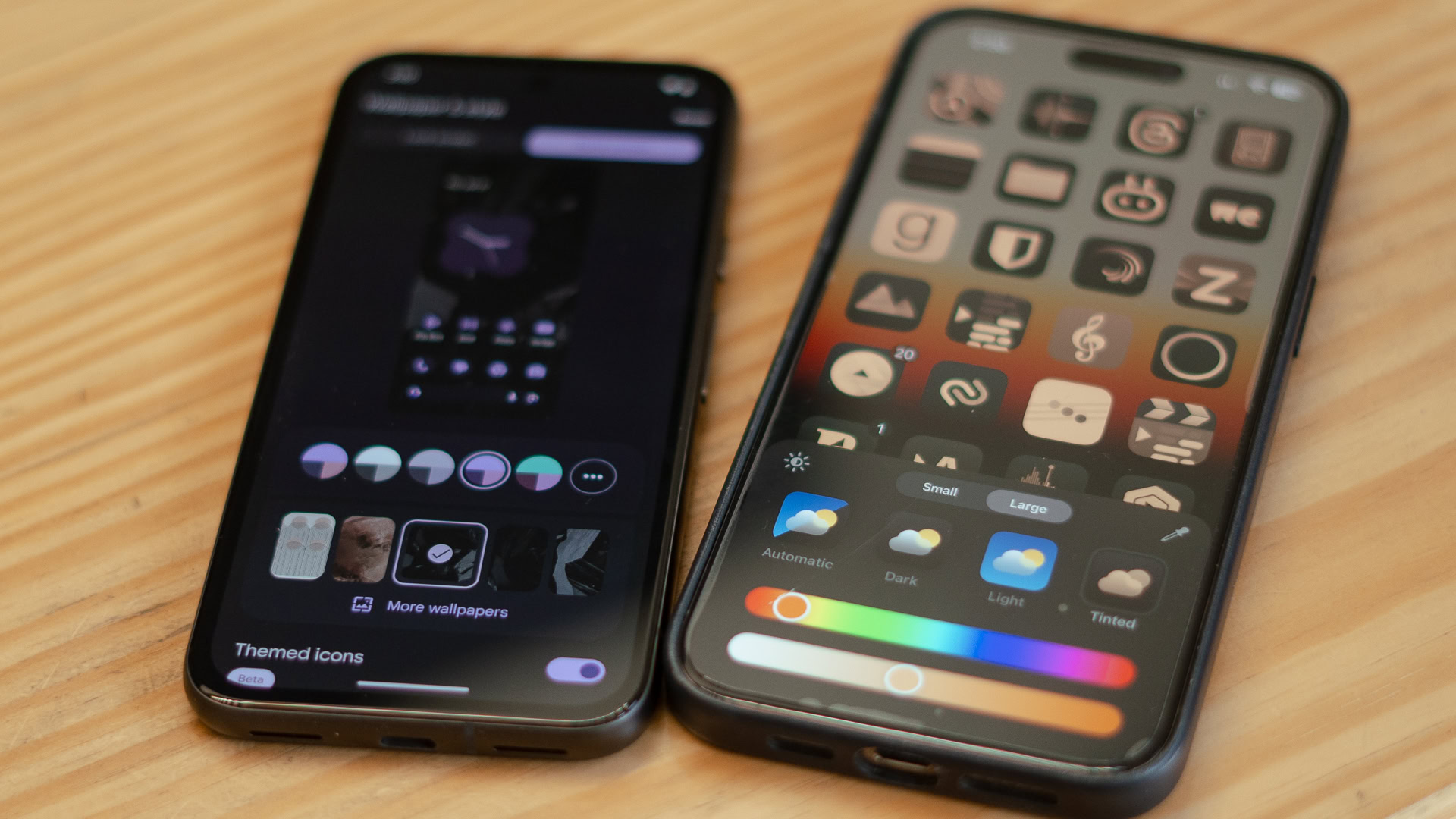Apple’s neglect of customization in iOS has been a sore point for both longtime iPhone users and dual Android and iPhone users like myself. With iOS 18, Apple is finally addressing this issue and has introduced a number of new features, such as the ability to move icons anywhere you want on the home screen, a reworked Control Center and, finally, a way to customize application icons. Many of these additions are features that Android users have enjoyed for years, but, in typical Apple fashion, it has its own unique twist or set of limitations.
iOS 18’s customization improvements borrow heavily from Android, but add their own twist.
Now, I’ve been using the iOS 18 developer beta since its release and have been wanting to talk about its customization features ever since. But I decided to wait until some of my most used apps, like Instagram, got support for iOS 18’s coloring feature to get a better read on how most apps will handle it. I’ve also been keeping a close eye on my Material You customizations of the Pixel 8a to see how the two compare. Here are my first impressions of Apple and Google’s two very different approaches to personalization, which, surprisingly, share a lot in common.
iOS 18 vs Material You: Two Custom Sides of a Familiar Coin

Dhruv Bhutani / Android Authority
Functionally similar to Material You’s themed icons, the new iOS 18 icon theme aims to create cohesiveness throughout the interface by giving all your apps and widgets a uniform look. However, in typical Apple fashion, the implementation is a mix of customizable options and rigid limitations.

Dhruv Bhutani / Android Authority
First, let’s discuss the similarities. Finally you can change the color of the app icons. There is the usual dark mode and light mode, but also the ability to shade all icons in a uniform color. Apple calls it coloring. Like Material You, iOS 18 supports dynamic color extraction, choosing an icon shade based on the dominant color in a background. Users can also use a color picker to draw a shade from the background or manually select another from the color slider. From there, it offers extensive customization via a saturation slider and, of course, the ability to completely change the color to whatever you want.
Apple releases unprecedented control to allow users to theme iOS, but I’m not sure if this is the right approach.
But that’s where the similarities end. While Material You is all about cohesiveness, creating a custom palette of matching icons based on color science and applying it across the interface, iOS 18’s version of App Colors does the same, but only offers one option only colors. Additionally, iOS 18’s color tinting only applies to home screen icons and widgets. The limitations don’t end there — the tint appears to only apply to dark mode variations of widgets. So, for example, there’s no way to turn your light mode back on the peach Google Calendar widget. Instead, you’ll have to settle for a dark mode widget with a peachy filter thrown on top. Predictably, it doesn’t look too good. It’s surprising to see image-conscious Apple letting down the guardrails on coloring apps, knowing it could portray the iPhone negatively online.
However, unlike Material You, iOS 18 lets you choose any color to color the interface using a color slider, with results ranging from aesthetic to absolute garbage. Want to build a theme with a green background and red icons for Christmas? Of course, you can. Apple is giving users more control, even more than Android, by allowing you to find the exact shade needed for your app icons. However, I’m not entirely sure this was the best solution.

Dhruv Bhutani / Android Authority

Dhruv Bhutani / Android Authority
However, there is one area where iOS 18’s color palette stands out. Android Material You won’t touch any app icon that hasn’t been updated to support themes. This can make for a somewhat disjointed home screen experience if you don’t get into custom icons. iOS 18, on the other hand, applies a uniform shade even if the app hasn’t been updated yet. This can make some app icons look unreadable or hard to distinguish, but it creates a uniform look. You can see the change in the Instagram app, where the larger icon has been updated to support coloring, but the smaller one has not. This issue should be largely resolved by the time iOS 18 is released later this year, with popular apps updating their icon sets to support the feature.
Material You’s color science spreads throughout the interface, while Apple’s icon coloring is limited to the home screen and widgets.
On the subject of cohesion, I’m surprised Apple hasn’t done more with the feature. While Material Ju uses extracted color to paint the system interface, notification center, and other elements in color-matching hues, iOS 18’s coloring feels like an early beta (which it is) or a system that’s been deliberately limited to reinforced Apple’s view that it knows best.
iOS 18 icon coloring vs material you: A rough start, but a welcome one

Dhruv Bhutani / Android Authority
From widgets to full themes, Apple has come a long way from rigid application of design principles. The latest iteration, app coloring, however, falls a little short of Apple’s usually well-thought-out approach to design. It’s all too easy to create a color scheme that breaks the aesthetic, doesn’t cover the interface enough, and lacks smart add-ons like a custom color palette similar to Material You. However, regardless of that, I’d say it’s a welcome step in the right direction. While my orange-on-orange color scheme above was an extreme example of exploring the possible scale of coloring, I liked having a saturated look with dark icons. Hopefully, this represents the start of more detailed customization for iOS 18. What about custom icon packs next, Apple?
#iOS #icon #theme #isnt #Material #step #direction
Image Source : www.androidauthority.com